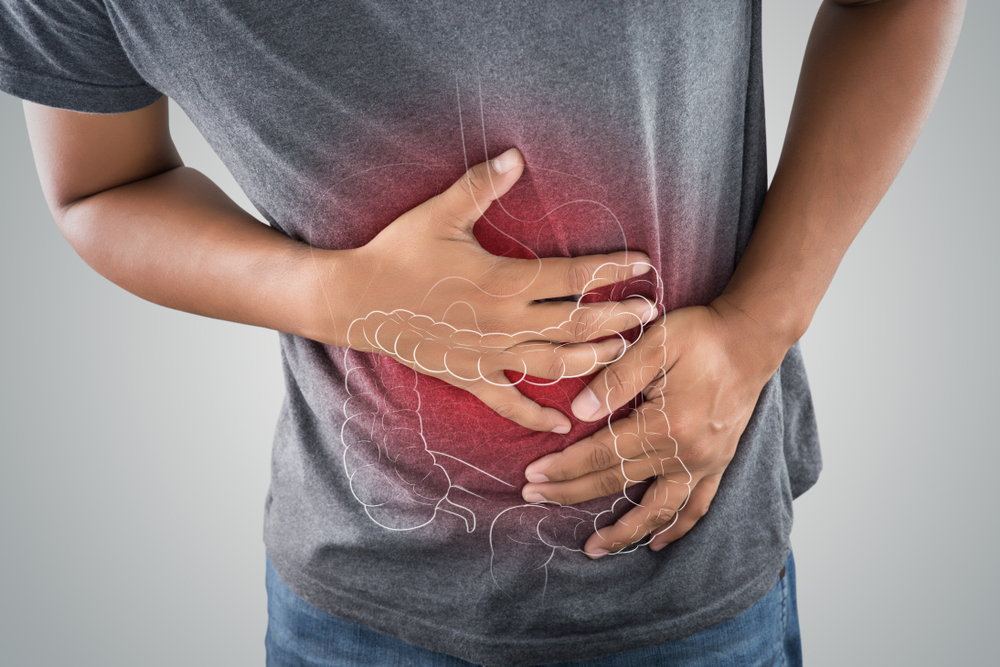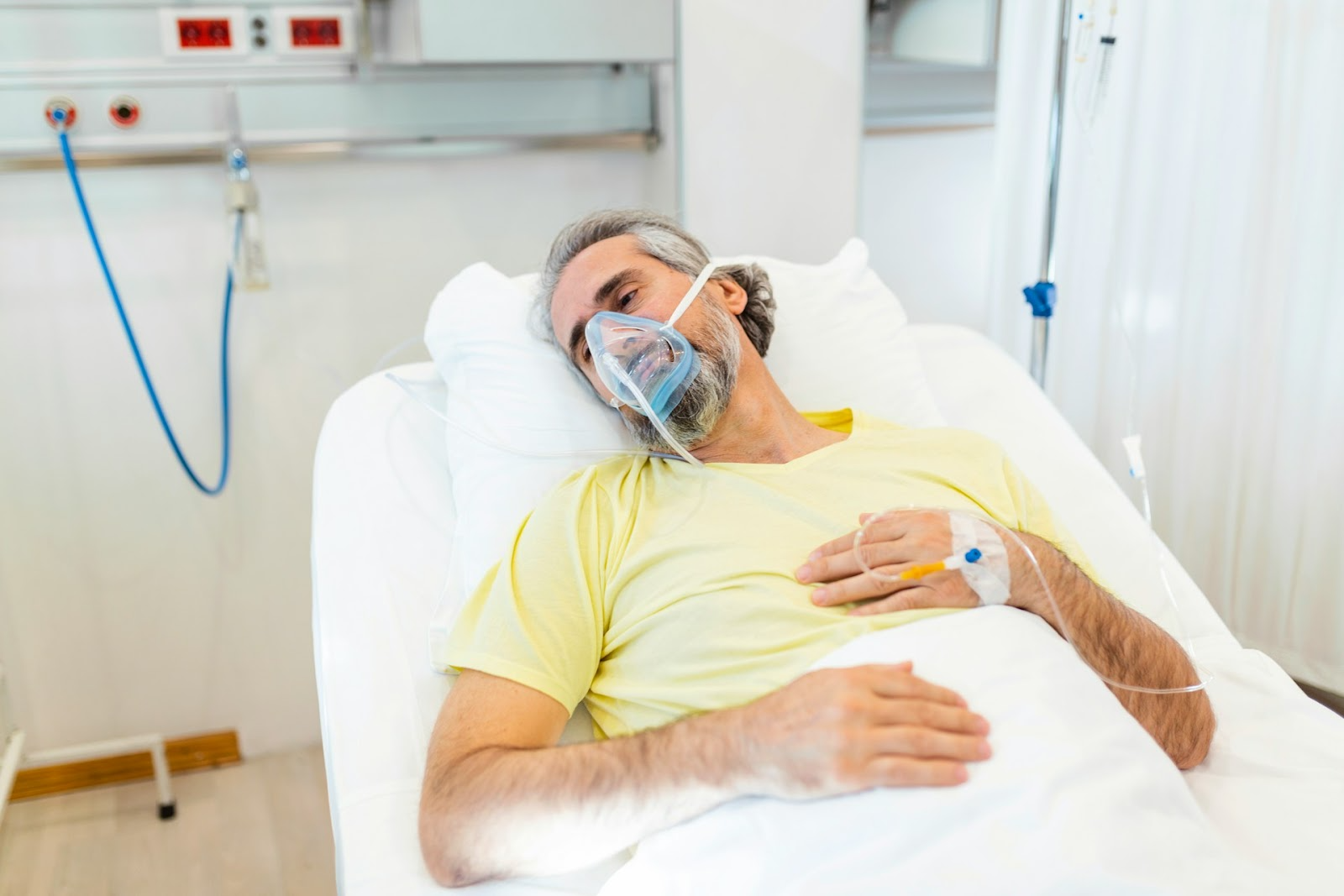Diarrhea can hit you unexpectedly, causing your body to lose important fluids and electrolytes quickly. This rapid loss creates an urgent need to restore your body's water balance – a process known as rehydration.
What Does Your Body Lose During Diarrhea?
During a bout of diarrhea, your body can lose significant amounts of the following:
- Water: Up to several liters per day
- Sodium: Essential for nerve function
- Potassium: Critical for muscle health
- Chloride: Maintains proper fluid balance
- Bicarbonate: Regulates blood pH levels
Why Is It Important to Replace These Lost Elements?
If you don't replace these lost elements, you may experience serious complications such as:
- Extreme thirst and dry mouth
- Rapid heartbeat
- Decreased blood pressure
- Mental confusion
- Muscle cramps
- Kidney problems
The effects of dehydration can vary depending on your age and overall health. Children and elderly individuals are at greater risk, with symptoms developing more quickly and potentially becoming life-threatening within hours.
What's the Key to Proper Rehydration?
To recover effectively from diarrhea, it's essential to have a well-thought-out plan for rehydration. Simply drinking water won't be enough. Your body requires a careful combination of fluids and electrolytes to heal properly.
Knowing the right techniques for rehydration can be the deciding factor between a speedy recovery and possible health issues.
Advanced Rehydration Solutions
For those looking for efficient ways to rehydrate, IV therapy can offer a quick and effective solution. This method not only improves hydration but also enhances overall health and energy levels.
In addition, specific treatments like Alpha Lipoic Acid IV therapy can provide strong antioxidant benefits, reduce inflammation, and promote overall wellness. Similarly, an Energy Boost IV therapy can revitalize your energy levels while enhancing mental clarity.
It's also crucial to support your immune system during such health challenges. The Immune Blast IV therapy is designed to strengthen your immunity, speed up recovery, and maintain optimal health.
By understanding these advanced rehydration methods, you can significantly improve your recovery outcomes during episodes of diarrhea.
Understanding Diarrhea and Its Causes
Diarrhea occurs when your digestive system fails to absorb fluids properly, resulting in loose, watery stools. The condition can stem from various triggers:
1. Viral Infections
- Norovirus
- Rotavirus
- Viral gastroenteritis
2. Bacterial Infections
- E. coli
- Salmonella
- Campylobacter
3. Food-Related Issues
- Food intolerances (lactose, gluten)
- Food allergies
- Consuming contaminated food or water
4. Medical Conditions
- Inflammatory bowel disease
- Celiac disease
- Irritable bowel syndrome
5. Common Symptoms
- Frequent, loose, watery stools
- Abdominal cramps
- Nausea or vomiting
- Fever
- Bloating
- Urgent need to use the bathroom
6. Red Flags in Bowel Movements
Blood in your stool requires immediate medical attention. The color and consistency can indicate different issues:
Bright Red Blood
- Hemorrhoids
- Anal fissures
- Lower intestinal bleeding
Dark Red or Black Blood
- Upper gastrointestinal bleeding
- Stomach ulcers
- Serious intestinal conditions
7. Additional Warning Signs
- Severe abdominal pain
- High fever (over 102°F/39°C)
- Severe dehydration
- Diarrhea lasting more than 3 days
- Frequent vomiting preventing liquid intake
Travelers often experience diarrhea due to exposure to unfamiliar bacteria in food or water. This typically resolves within a few days but requires careful monitoring and proper hydration.
In such cases, acute care services can be beneficial. These include telehealth and in-person services that provide high-quality healthcare, prescription services, testing, and hydration IV drip therapy to help manage symptoms effectively.
Moreover, if you're considering a comprehensive approach to detoxify your body after experiencing such health issues, you might want to explore the Lity Detox Program at Livity Wellness. This program is designed to purify your system, eliminate toxins, and rejuvenate your health through a thorough detoxification regimen.

Methods to Rehydrate After Diarrhea
Effective rehydration after diarrhea requires a strategic approach to restore both fluids and essential minerals. Here's what you need to know about the most effective rehydration methods:
Oral Rehydration Solutions (ORS)
- Pre-packaged ORS contain the perfect balance of water, salt, and sugar
- Mix with clean water according to package instructions
- Available at pharmacies and health stores
- Can be made at home by mixing:
- 6 level teaspoons of sugar
- 1/2 level teaspoon of salt
- 1 liter of clean drinking water
Drinking Schedule for Optimal Rehydration
- Take small sips every 5-10 minutes
- Avoid gulping large amounts at once
- Aim to drink even when not feeling thirsty
- Set reminders to maintain consistent fluid intake
Essential Electrolytes for Recovery
- Sodium: Helps retain water in your body
- Potassium: Supports muscle function
- Chloride: Maintains proper fluid balance
- Magnesium: Aids in muscle recovery
Natural Rehydration Options
- Coconut water: Rich in potassium and natural electrolytes
- Clear broths: Provide sodium and minerals
- Diluted fruit juices: Supply natural sugars and vitamins
- Sports drinks: Contain balanced electrolyte formulas
Tips for Successful Rehydration
- Room temperature fluids are easier to tolerate
- Avoid caffeine and alcohol
- Keep track of fluid intake
- Watch urine color - pale yellow indicates good hydration
- Continue fluid intake even after loose stools stop
Your body needs consistent hydration to recover from diarrhea. The combination of proper fluids and electrolytes helps restore your body's natural balance and prevents complications from dehydration.
For those who may struggle with oral rehydration methods, IV hydration therapy could be a viable alternative. This method not only replenishes lost fluids but also provides essential nutrients, making it an effective solution for quicker recovery.
If you're in South Florida, consider reaching out to Livity Wellness, a holistic health provider that offers various wellness solutions including Morning After IV Therapy for fast hangover relief which can also aid in rehydration.
In addition to these methods, it's important to remember that certain conditions like leg cramps can arise during the recovery process. These cramps often occur due to dehydration or an imbalance of electrolytes. Therefore, incorporating the best drinks for leg cramps into your rehydration plan could provide extra relief.
Rehydration Tips for Different Age Groups
Children's Rehydration Needs
Children require special attention during rehydration due to their smaller body size and higher risk of dehydration. For infants under 6 months, breast milk remains the primary source of hydration. Formula-fed babies should receive their regular formula in smaller, frequent portions.
Age-Specific Guidelines
- 0-6 months: 30-90 ml fluid per hour
- 6 months-2 years: 90-180 ml fluid per hour
- 2-5 years: 180-250 ml fluid per hour
- 5+ years: 250-400 ml fluid per hour
ORS for Children Over 12 Months
Children over one year benefit from Oral Rehydration Solutions (ORS). These solutions:
- Match the body's electrolyte balance
- Provide essential minerals
- Come in child-friendly flavors
- Can be mixed with clear broths or juices
Adult Rehydration Requirements
Adults need to consume 2-3 liters of fluid daily during recovery from diarrhea. This includes:
- Water: 8-10 glasses spread throughout the day
- Clear broths: 2-3 cups
- Electrolyte drinks: 1-2 servings
- Caffeine-free herbal teas
Coconut Water Benefits
Coconut water serves as a natural rehydration solution:
- Contains essential electrolytes (potassium, sodium, magnesium)
- Provides natural sugars for energy
- Offers better absorption than plain water
- Contains antioxidants that support recovery
- Gentle on the stomach during illness
Special Considerations
- Athletes need additional fluid intake
- They might benefit from IV Therapy which offers a more direct method for hydration compared to oral supplements.
- Elderly individuals should monitor urine color
- Pregnant women require increased fluid consumption
- People with kidney problems should consult healthcare providers about fluid intake
For those seeking a more immediate and effective way to boost hydration levels, IV Hydration Therapy could be an option worth considering. This therapy not only enhances hydration but also increases energy levels significantly.
Moreover, busy professionals often struggle to maintain optimal hydration due to their hectic schedules. In such cases, mobile IV therapy can provide a convenient solution that boosts health and productivity.
Additionally, for individuals looking for a more comprehensive approach to health recovery, therapies like the Meyers Cocktail IV therapy can offer substantial benefits. This treatment is designed to rejuvenate health by providing essential vitamins and minerals directly into the bloodstream, resulting in quicker absorption and effectiveness. More information regarding this therapy can be found here.
Gradual Rehydration Process: What You Need to Know
The key to successful rehydration lies in a measured, systematic approach. Your body needs time to adjust and absorb fluids effectively after experiencing diarrhea.
Starting Small: The First Steps
- Begin with tiny sips - just 5-15 ml at a time
- Wait 5-10 minutes between sips
- Watch for signs of nausea or stomach discomfort
- Increase volume gradually if well-tolerated
Age-Specific Hourly Fluid Intake Guidelines
For Infants (0-6 months)
- Initial hour: 30-90 ml
- Offer breast milk in shorter, frequent sessions
- Formula-fed babies: Reduce normal portion size by half
For Toddlers (6 months-2 years)
- Target range: 90-180 ml per hour
- Split into 6-12 small portions
- Use a spoon or sippy cup for controlled intake
For Children and Adults (2+ years)
- Aim for 180-250 ml hourly
- Divide into 4-6 drinking sessions
- Track intake using a measured cup
Signs of Successful Fluid Tolerance
- No vomiting after drinking
- Decreased thirst
- Improved energy levels
- Clearer urine color
Tips for Steady Rehydration
- Keep a rehydration log to track intake
- Set timers for regular drinking intervals
- Use room temperature fluids
- Avoid gulping or drinking too quickly
- Stop immediately if nausea occurs
Remember to maintain this gradual approach for at least 4 hours before attempting to increase fluid intake or introduce solid foods. Your body's positive response to small amounts of fluid serves as the green light for progressing to the next phase of rehydration.
While focusing on rehydration, it's also essential to consider overall wellness. Incorporating therapies like Ultimate Beauty IV Therapy can not only aid in hydration but also enhance your natural radiance by boosting collagen production and promoting a glowing complexion. Additionally, exploring anti-aging solutions offered by wellness centers can rejuvenate your skin and further enhance your beauty during the recovery phase.

Resuming Regular Diet After Diarrhea: A Step-by-Step Guide
Returning to your regular diet requires a strategic approach to prevent digestive system irritation. Here's a practical guide to reintroduce foods:
Day 1 (First 4-6 hours after rehydration)
- Start with clear broths
- Plain crackers
- Gelatin
- Ice pops without fruit pieces
Day 2
- Plain white rice
- Boiled potatoes (no skin)
- Plain toast
- Lean, boiled chicken (no skin)
- Cooked carrots
Days 3-4
- Soft-cooked eggs
- Canned fruits
- Steamed white fish
- Plain pasta
- Low-fat yogurt
Foods to Avoid During Recovery
- Dairy products (except yogurt)
- Fried or greasy foods
- Raw vegetables
- Spicy dishes
- Caffeine
- Alcohol
Eating Tips During Recovery
- Keep portions small
- Eat slowly
- Chew thoroughly
- Space meals 2-3 hours apart
- Stop eating if nausea occurs
Your body needs time to adjust to solid foods. Listen to your digestive system's signals and adjust your food intake accordingly. If symptoms return after introducing a particular food, remove it from your diet temporarily and try again in a few days.
Signs of Dehydration to Watch For After a Diarrhea Episode
Recognizing dehydration symptoms early can prevent serious complications after experiencing diarrhea. Your body displays specific warning signs when fluid levels drop below normal.
Physical Signs to Monitor:
- Dry, sticky mouth and tongue
- Decreased skin elasticity - skin doesn't bounce back when pinched
- Sunken cheeks and eyes
- Dark circles under the eyes
- Reduced sweating
- Cold hands and feet
Behavioral Changes:
- Increased thirst
- Irritability or confusion
- Unusual sleepiness or lethargy
- Dizziness when standing
- Headaches
Urinary Signs:
- Dark yellow or amber-colored urine
- Reduced urination frequency
- Strong-smelling urine
- No urination for 4-6 hours
Additional Warning Signs:
- Rapid breathing
- Fast heart rate
- Low blood pressure
- Muscle cramps
- Weakness
- Dry, cracked lips
These symptoms can intensify with chronic or long-term diarrhea. Children might show additional signs like crying without tears, decreased activity levels, and a sunken soft spot on top of the head in infants.
Preventing Dehydration After a Diarrhea Episode: Tips and Strategies
Staying hydrated after diarrhea requires a strategic approach. Here's how you can prevent dehydration from recurring:
Essential Hydration Practices:
- Sip fluids slowly every 10-15 minutes
- Use a small spoon or cup to control intake
- Keep water at room temperature
- Track your fluid intake throughout the day
Beverages to Choose:
- Clear broths
- Coconut water
- Oral rehydration solutions
- Diluted fruit juices without pulp
- Herbal teas (chamomile, peppermint)
Drinks to Avoid:
- Caffeinated beverages (coffee, tea, energy drinks)
- Alcoholic drinks
- Carbonated sodas
- Undiluted fruit juices
- Sports drinks with high sugar content
Additional Prevention Tips:
- Keep a water bottle within reach
- Set hydration reminders on your phone
- Monitor urine color (aim for light yellow)
- Stay in cool environments to prevent excess sweating
- Consume water-rich foods like watermelon and cucumber
Remember to adjust your fluid intake based on your activity level and climate conditions. Hot weather or physical activity might require increased fluid consumption to maintain proper hydration levels.
Recovery Foods to Eat After Diarrhea: The BRAT Diet Explained
The BRAT diet serves as a gentle, easily digestible meal plan that helps your digestive system recover after diarrhea. This diet consists of four main components:
- Bananas: Rich in potassium and pectin, bananas help restore electrolytes and firm up stools
- Rice: White rice provides easily digestible carbohydrates while binding stools
- Applesauce: Contains pectin and natural sugars that help reduce diarrhea
- Toast: Plain, white toast offers simple carbohydrates that are easy to digest
Beyond these core foods, you can incorporate other bland, low-fiber options:
- Plain crackers
- Boiled potatoes
- Clear broths
- Plain pasta
- Cooked carrots
Foods to Avoid During Recovery:
- Dairy products
- Spicy foods
- Fried or greasy items
- Raw vegetables
- High-fiber foods
- Caffeine
- Alcohol
The BRAT diet works best as a short-term solution, typically lasting 24-48 hours. Your body needs a broader range of nutrients for proper recovery, so gradually introduce other foods as your symptoms improve. Start with small portions and eat slowly to prevent overwhelming your digestive system.
Pro tip: Toast your bread well - the browning process makes it easier to digest.
In addition to dietary changes, IV therapy can also play a significant role in recovery. For instance, Ultimate Cure IV Therapy at Livity Wellness offers tailored treatments designed to optimize health and vitality during recovery. If you're seeking a more personalized approach, consider the benefits of mobile IV therapy which can provide convenient and effective hydration and nourishment. Furthermore, specialized treatments such as PlaqueX and Alpha Lipoic Acid IV therapy can support overall wellness by enhancing cardiovascular health and liver function.
When to Seek Medical Attention After Experiencing Severe Dehydration Symptoms Due To Prolonged Diarrhea?
Recognizing when to get medical help can be life-saving during severe dehydration episodes. Here are the critical warning signs that require immediate medical attention:
Adults should seek emergency care if experiencing:
- Extreme thirst that persists despite rehydration attempts
- Little or no urination for 8+ hours
- Dark-colored urine
- Severe dizziness or fainting spells
- Rapid heartbeat
- Confusion or disorientation
- Severe stomach or rectal pain
- Black or bloody stools
For children, watch for these urgent symptoms:
- No wet diapers for 4-6 hours
- Sunken eyes or cheeks
- Lack of tears when crying
- Unusual sleepiness or irritability
- High fever (103°F/39.4°C or higher)
- Rapid breathing
- Sunken soft spot on top of the head (in infants)
Additional red flags include:
- Diarrhea lasting more than 3 days
- Inability to keep fluids down for 24 hours
- Signs of severe dehydration despite following rehydration protocols
- Symptoms of heat exhaustion alongside dehydration
Remember: Severe dehydration can become dangerous quickly. Don't hesitate to contact healthcare providers if you're unsure about symptom severity. Early intervention prevents serious complications and speeds up recovery.
.png)









